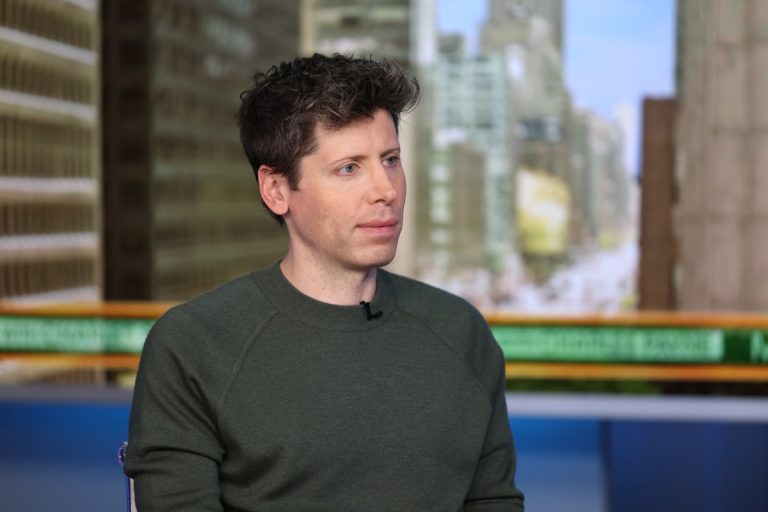Syrian rebels have brought 24 years of Bashar al Assad’s dictatorship to an end in a single week.
Led by the former al Qaeda affiliate group Hayat Tahrir al Sham, the uprising was also supported by US-backed Kurdish forces, Turkish-backed militias, and dozens of smaller fighter groups.
Russia ‘surprised’ at Assad ousting – Syria latest
Here we look at who the various rebel groups are, who supports them – and what areas they control now the government has fallen.
Hayat Tahrir al Sham (HTS)
The ousting of Bashar al Assad’s government was spearheaded by the Islamist group Hayat Tahrir al Sham (HTS) – a former affiliate of al Qaeda known then as the Nusra Front.
Its founder Abu Muhammed al Jolani broke away from al Qaeda in 2016 in a bid to appear more moderate.
It went through several name changes, eventually settling on HTS, and becoming the strongest anti-Assad rebel group around the city of Idlib in the northwest.
HTS is estimated to have between 10,000 and 30,000 members. The UK, US, Russia, and Turkey all classify it as a terrorist group.
Read more
How Syrian rebels overthrew Assad in a week
Former MI6 chief on what’s next for Syri
Luxury cars found during raid of Assad’s palace
“They are an Islamic group that represents political Islam,” military analyst Professor Michael Clarke tells Sky News.
“Jolani claims they are simply Syrian nationalists that will be tolerant of all minorities. But they explicitly rule out democracy because that takes legitimacy away from God.
“So the best we can hope for from HTS would be some kind of ‘benevolent dictatorship’ with a tolerance of Syria’s patchwork of different peoples.
“But the chances of them being able to bring everyone together under a banner of Syrian patriotism is not great – so I suspect they won’t hold together for long.”
In an ideal world, Professor Clarke adds, HTS wants control of the whole of Syria – as opposed to rival groups who simply “want their agendas recognised”.
Syrian Democratic Forces (SDF)
The Syrian Democratic Forces (SDF) formed in 2015. They are largely made up of Kurdish fighters who want an independent Kurdish state across Syria, Iraq, and Turkey – although there are Christian and Arab militias who fight for them as well.
The SDF is mainly made up of members of the Kurdish People’s Protection Units (YPG), which came about in 2012, ultimately taking control of large parts of northeast Syria while Assad forces took on rebels in the west.
Many of the YPG’s fighters are veterans of the Kurdistan Workers Party (PKK), which fought for decades inside Turkey in a bid to establish Kurdistan as an independent state.
As Islamic State advanced through Syria from 2014 – the YPG held it back – which earned it, and later the SDF, the backing of the United States.
“The SDF is the West’s main partner in fighting Islamic State,” Professor Clarke says.
“The US doesn’t want to get too involved – although like many Western nations, it is broadly supportive of a Kurdish homeland. So it helps with power and intelligence while the SDF does the dirty work on the ground.”
Professor Clarke describes it as “well organised” and strongest militarily in terms of “numbers and ability”, but adds that it “doesn’t want to take over the whole of Syria” – and is purely focused on the Kurdish struggle.
Syrian National Army (SNA)
After Turkey sent troops into Syria to push back both Islamic State and Kurdish groups in 2016 – a network of Turkish-backed militias formed and became the Syrian National Army (SNA) the following year. This grouping incorporated many elements of what was previously known as the Free Syrian Army (FSA).
The SNA then held an area along the Syrian-Turkish border – north of Aleppo – as a type of buffer zone to keep Kurdish forces out of its territory.
“Like the SDF, they’ve got an anti-Islamist agenda, but they’re aided by Turkey instead of the US,” Professor Clarke says.
While they were willing to join HTS forces to oust Assad – their agenda is ultimately “antagonistic” towards them, he adds.
The SNA currently holds territory along the Turkish border, which is split by larger SDF-held areas in the northeast and northwest.
Other groups
There are many more smaller militias active across the country.
Although Islamic State was almost completely eradicated in Syria by the US in 2019, it still has some presence in parts of the country. The US Army has kept around 900 troops inside Syria to suppress any activity, with IS attacks becoming more frequent since 2023.
Various other wider coalitions of rebel groups exist.
The Southern Operations Group formed as a new rebel coalition amid this month’s uprising and comprises around 50 groups including Christian, Druze, and Alawite fighters.
Wider umbrella groups, with both Syrian nationalist and Islamist ideologies, have also existed over the years.
“Most of these smaller militias change name and change allegiances fairly regularly,” Professor Clarke says.
“But they’re all competing to have their own agendas recognised by whoever is going to do the top job.”































+ There are no comments
Add yours